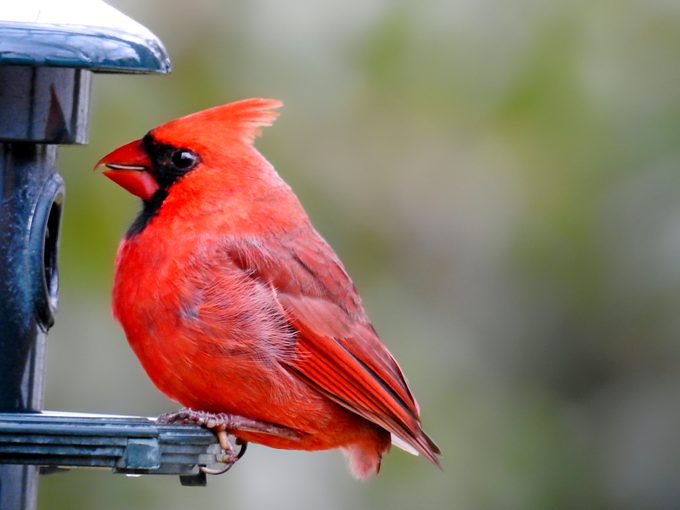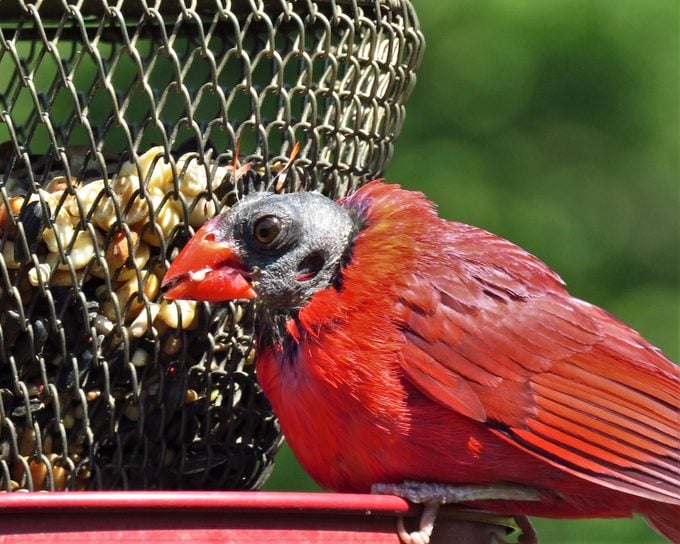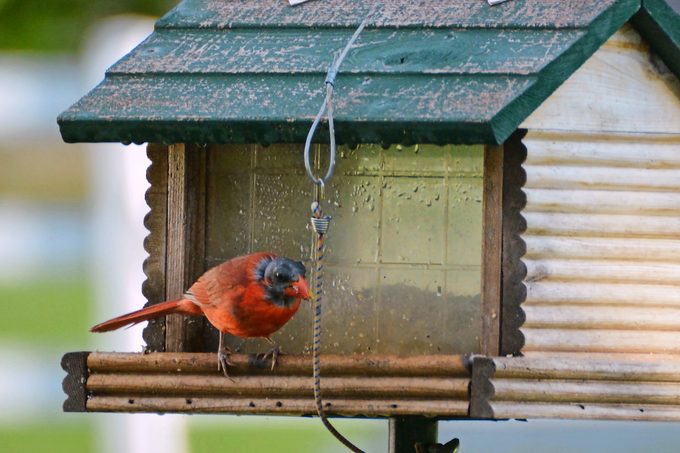Can a Cardinal Fly Without Tail Feathers?
Updated: Dec. 05, 2023
Cardinals are a birder favorite, but they don't always look neat and pretty. Here are some reasons you might find a cardinal feather.
Northern cardinals perch atop many “favorite bird” lists. It’s not difficult to understand why; their red coloring transforms them into fluttering roses on a canvas of backyard greens and browns. Sometimes, though, that eye-catching plumage isn’t without flaw. Here are a few reasons you might find a redbird with a missing cardinal feather (or a few!), according to our experts. Plus, can a bird fly without tail feathers?
If you see a cardinal, here’s what it means.
Missing Cardinal Tail Feathers

“A male cardinal without tail feathers visited our feeder. What happened to it?” asks Birds & Blooms reader Richard Carlson
Kenn and Kimberly Kaufman: When a songbird loses all its tail feathers at once, it’s usually the result of an accident. Maybe this cardinal had a near miss with a predator, or perhaps its tail got caught in something and the bird had to pull free. The cardinal should be fine and the tail feathers will grow back. Songbirds replace all their feathers at least once per year anyway, with new feathers growing in as old ones drop out in a process called molt. During a normal molt, only a couple of feathers are replaced at a time, so the tail may look ragged but it’s never completely missing.
Curious about more unique looking birds, other than a strange missing cardinal feather? Check out these amazing yellow cardinals and white cardinals!
Missing Cardinal Head Feather

“Did this northern cardinal have a run-in with a predator or did disease cause his feathers to fall out?” asks Birds & Blooms reader Janine Neiswender
Kenn and Kimberly: It’s fairly common to see cardinals looking like this in late summer or early fall when they go through the process of molt (growing a fresh set of feathers). Usually the feathers are replaced just a few at a time, but cardinals sometimes drop most of their head feathers at once. If the bird stays bareheaded for more than a couple of weeks, or if you see this at a completely different time of year, the cardinal might have a skin disease or an infestation of feather mites on its head.
Learn interesting cardinal bird facts you should know.

“What is this unusual bird?” asks Birds & Blooms reader Cherie Souhrada.
Kenn and Kimberly: Believe it or not, your mystery bird with the odd hairdo is an adult male cardinal. The bald look is sometimes caused by environmental factors like nutritional deficiencies or feather mites. But it’s most commonly the result of molting. To maintain their feathers for flight and keep them water resistant and insulating, birds regularly replace their plumage with new feathers in the process called molt. In some birds, particularly blue jays, cardinals and a few blackbirds, the head molt can happen all at once. This results in very strange-looking birds, like the peculiar visitor in your photo.
Next, find out what foods cardinals eat and how to attract them.




















